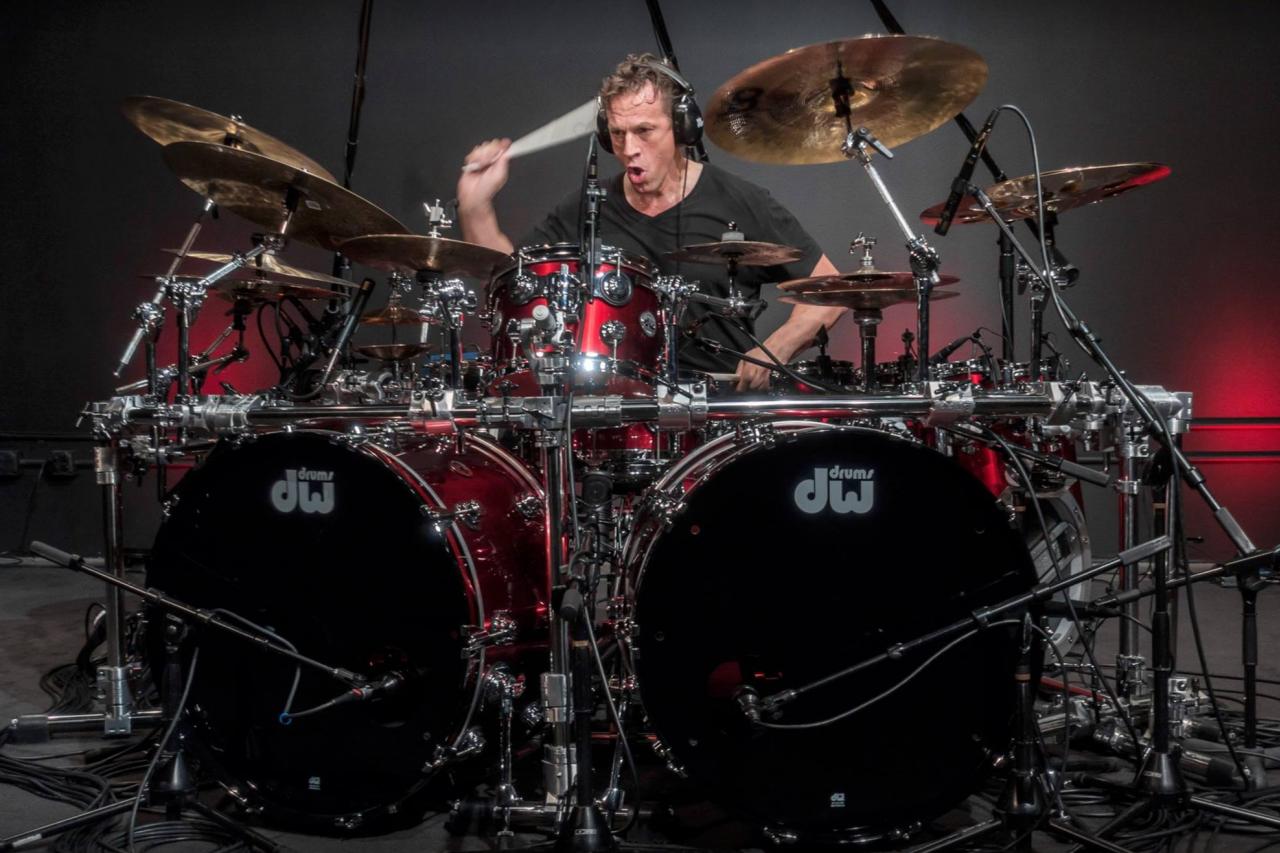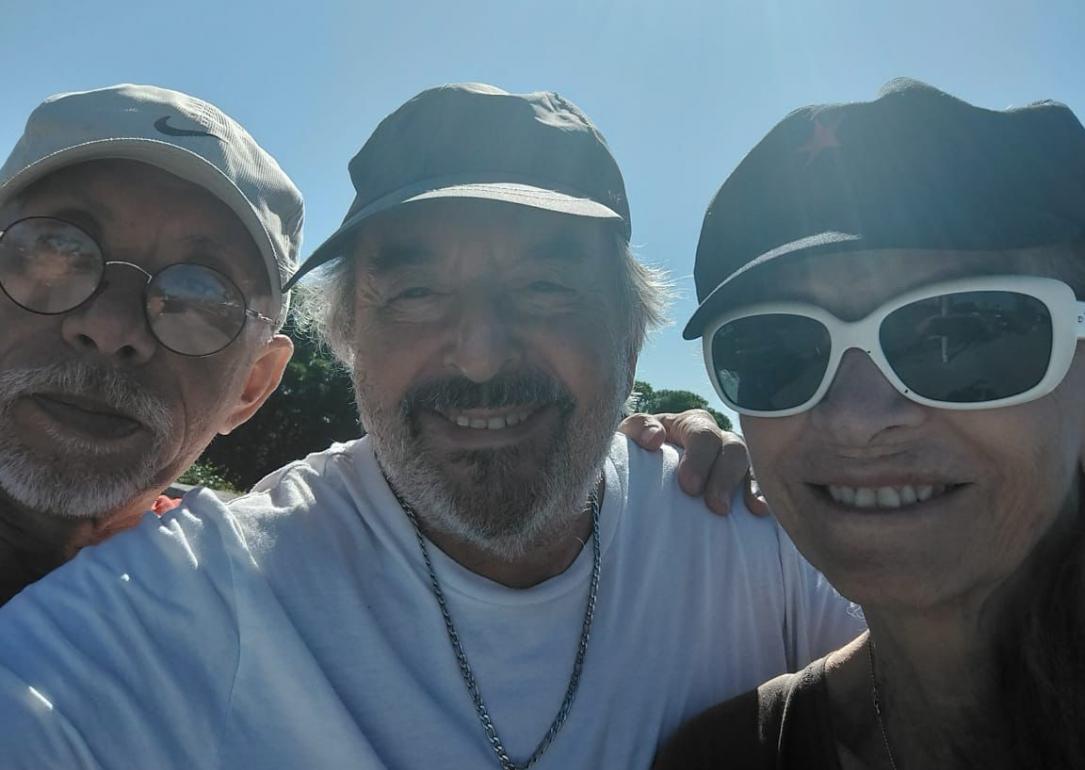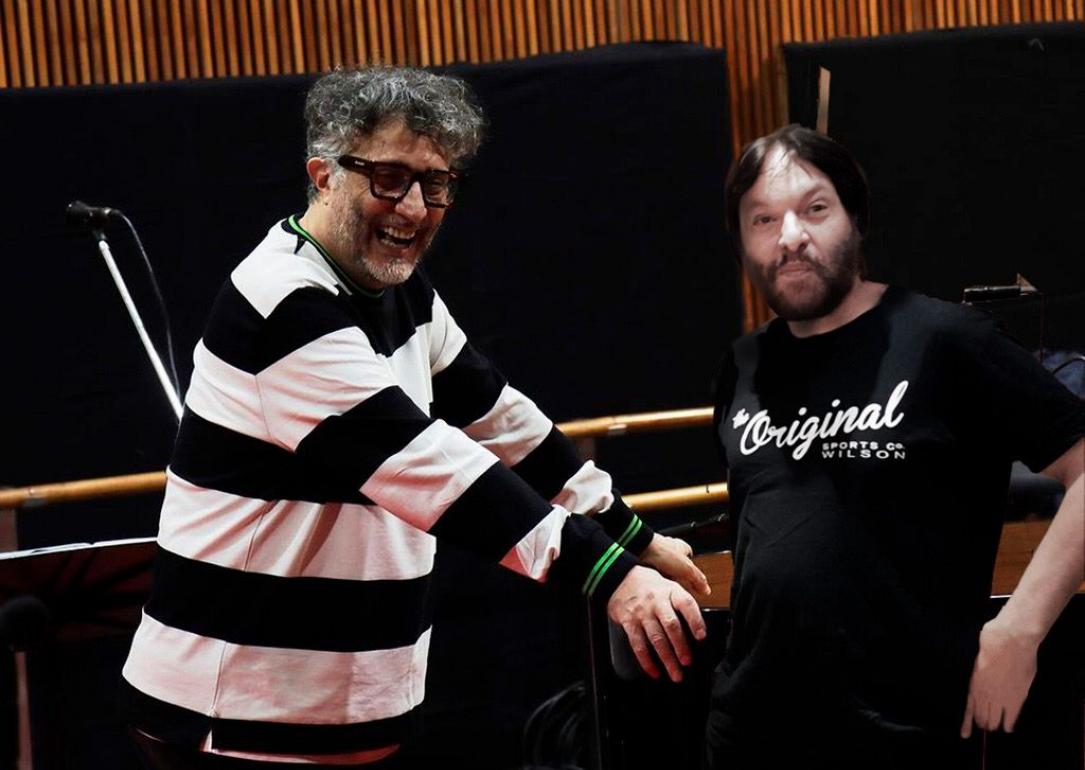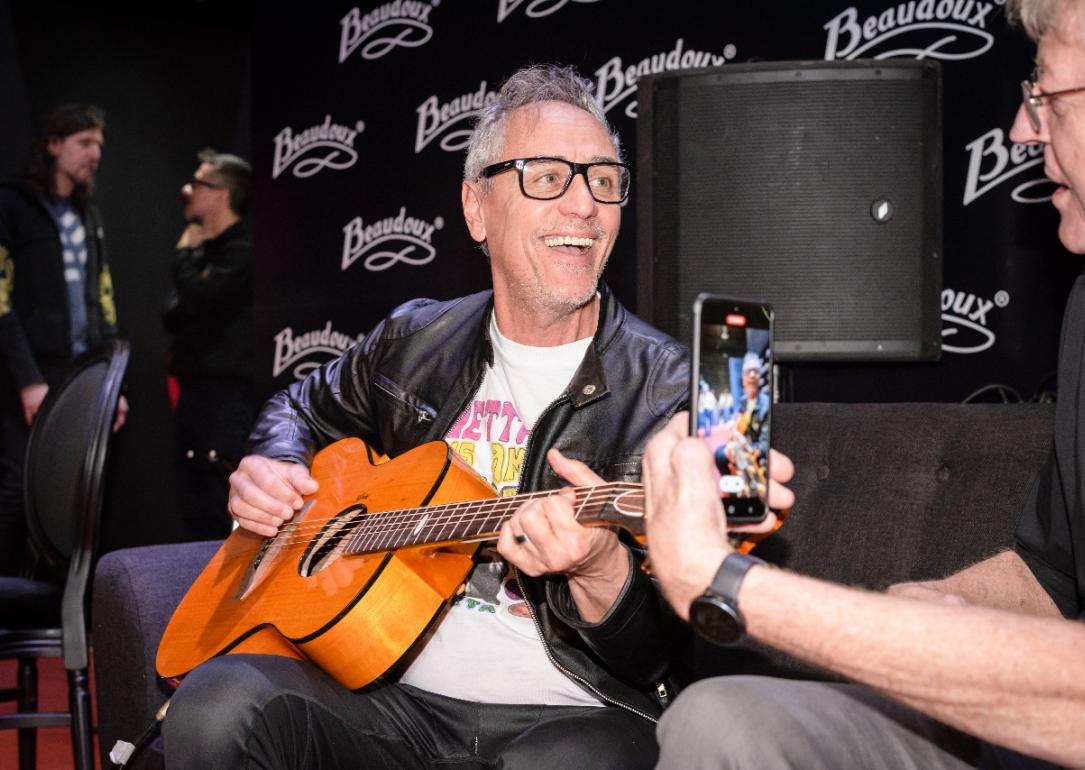Entrevista: Hernán Osuna
(Nota: El artículo contó con el asesoramiento de Maximiliano Giannazzo)

(English version below)
Con asombrosas habilidades como baterista, ostinatos ultra complejos, técnica inhumana, una gran cantidad de disciplina, creatividad y carisma, Thomas Lang emergió de su tierra natal, Austria y realizó una revolución en la escena mundial de la batería durante los años 90 y 2000. Él y colegas como Virgil Donati y Marco Minnemann elevaron el nivel baterístico a límites insospechados.
Lang es considerado uno de los mejores bateristas del mundo. Su enfoque técnico, resistencia, interdependencia, coordinación y musicalidad son signos no sólo de gran habilidad: revelan años y años de estudio metódico. La práctica perfecta te hace perfecto.

El baterista, productor, artista y educador de renombre mundial toca lo “no tocado” en sus lanzamientos en solitario. Pero es mucho más que un músico altamente técnico; se adapta a lo que cada situación musical requiera. Esa versatilidad lo llevó a trabajar con artistas muy diferentes como: Paul Gilbert (Racer X / Mr. Big), John Wetton (Asia / King Crimson), Robert Fripp, Tina Turner, Peter Gabriel, Glenn Hughes (Deep Purple) UK, Eddie Jobson, Robbie Williams, Kelly Clarkson, Sugababes, Geri Halliwell, Emma Burton ("Baby Spice"), Victoria Beckham ("Posh Spice"), Ronan Keating, Steve Hackett (Génesis), Boyzone, 911, Falco, Nina Hagen , Steve Jones, Mick Jones (The Clash), The Commodores, George Michael, Doogie White (Rainbow), Bill Liesegang, The Blockheads, Gianna Nannini, Sertab Erener, Jens Lindemann, Vienna Art Orchestra, Bonnie Tyler, Save The Robots, Stork , Terabita, Schwarzenator, Vinnie Valentino, Gregg Howe, Page Hamilton (Casco), Mark Bonilla (Montrose) y muchos más.
REC Or Play tuvo la oportunidad de hablar con el baterista austríaco días antes de la NAMM, una de las dos ferias de productos musicales más grandes del mundo. En una extensa charla, Thomas nos contó todo sobre Progpop, su nuevo álbum que fue grabado en su estudio casero e incluye invitados especiales como Ginny Luke, Marc Bonilla, Freddy Nelson (solista / Paul Gilbert), Francesco DiCosmo (Thin Lizzy / Evanescence ), Kevin Chown (Paul Gilbert / Bombastic Meatbats / Tarja / Sebastian Bach), Wojtek Pilichowski y Leah Woodward (The Aliases / Raven) entre otros.
También discutimos con Lang los pros y los contras de la grabación remota (tiene dos estudios donde realiza grabaciones para artistas de todo el mundo), su entrenamiento físico, su sistema de coordinación e interdependencia de miembros, con el cual mostró un enfoque completamente nuevo al momento de generar un rápido progreso en el instrumento, y otros puntos. Una charla muy inspiradora con un gran baterista y ser humano. Thomas Lang, el emperador. Echemos un profundo vistazo a su mundo.
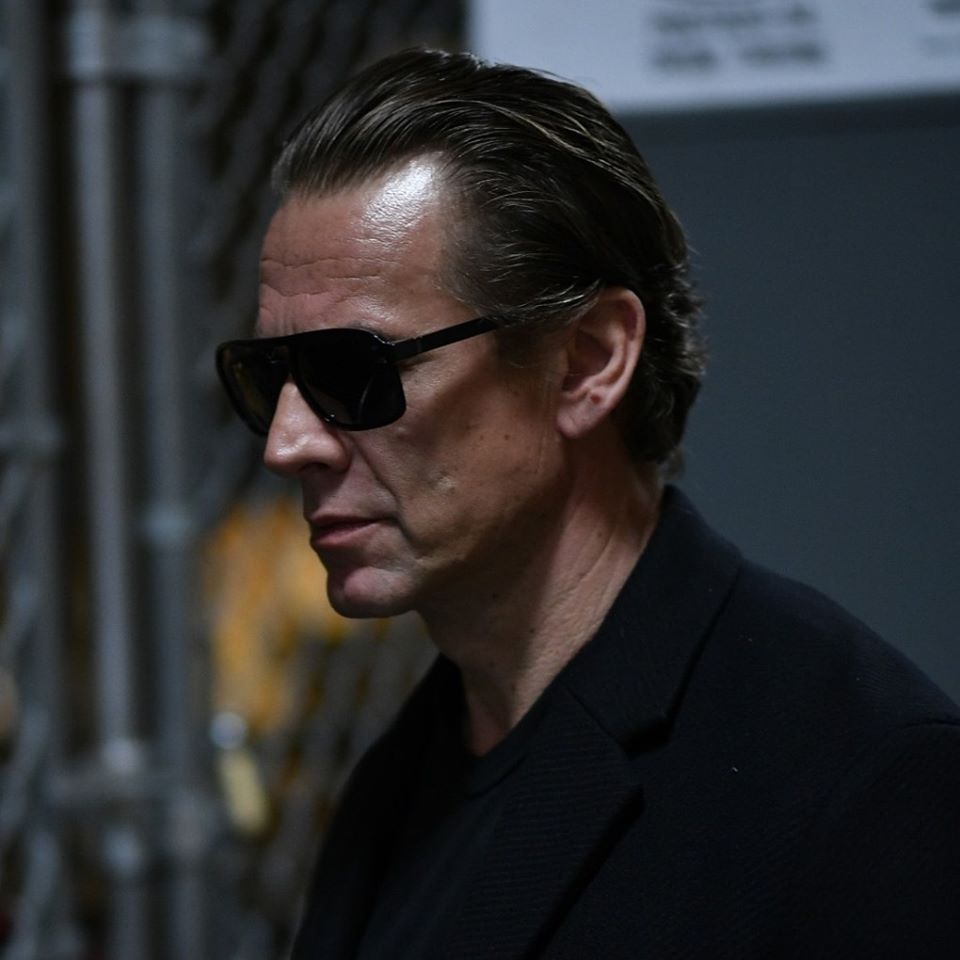
Hablemos sobre ProgPop, tu más reciente material discográfico. ¿Lo grabaste en tu propio estudio?
Sí, lo produje y grabé en mi estudio. Grabé todas las baterías full, en vivo. Nada de punching-in, nada de copy/paste ni quantización ni nada procesado. Quería capturar una performance real de batería y no algo procesado, cortado y editado. Además fui el ingeniero de sonido del álbum entero. Grabé a todos los cantantes y músicos invitados. En algunos casos mandé archivos de canciones a algunos amigos y artistas que admiro, de diferentes partes del mundo. Grabaron en sus respectivos home studios, simplemente porque de esa manera se ahorraba tiempo y se hacía posible colaborar con ellos. De este modo participaron Jeremy Barnes (Australia), Milan Polak (Italia), Leah Woodward y Ed Poole (Reino Unido), Tobias Mertens (Alemania) y Freddie Nelson desde Philadelphia, Estados Unidos. El registro se hizo en un período relativamente corto, todos los invitados fueron sumados a 14 canciones en aproximadamente 4 semanas, lo cual es relativamente rápido teniendo en cuenta la cantidad de temas y la complejidad de algunos de ellos.
¿Cuál fue el concepto general del álbum?
La idea fue hacer un “disco de bateristas” pero que fuera diferente a los habituales CD`s de bateristas. Muchos de esos álbumes son instrumentales y entran musicalmente en el género fusión o jazz/fusión/metal crossover. No conozco casi un álbum de un baterista que no sea de ese estilo. Lo encuentro francamente aburrido.
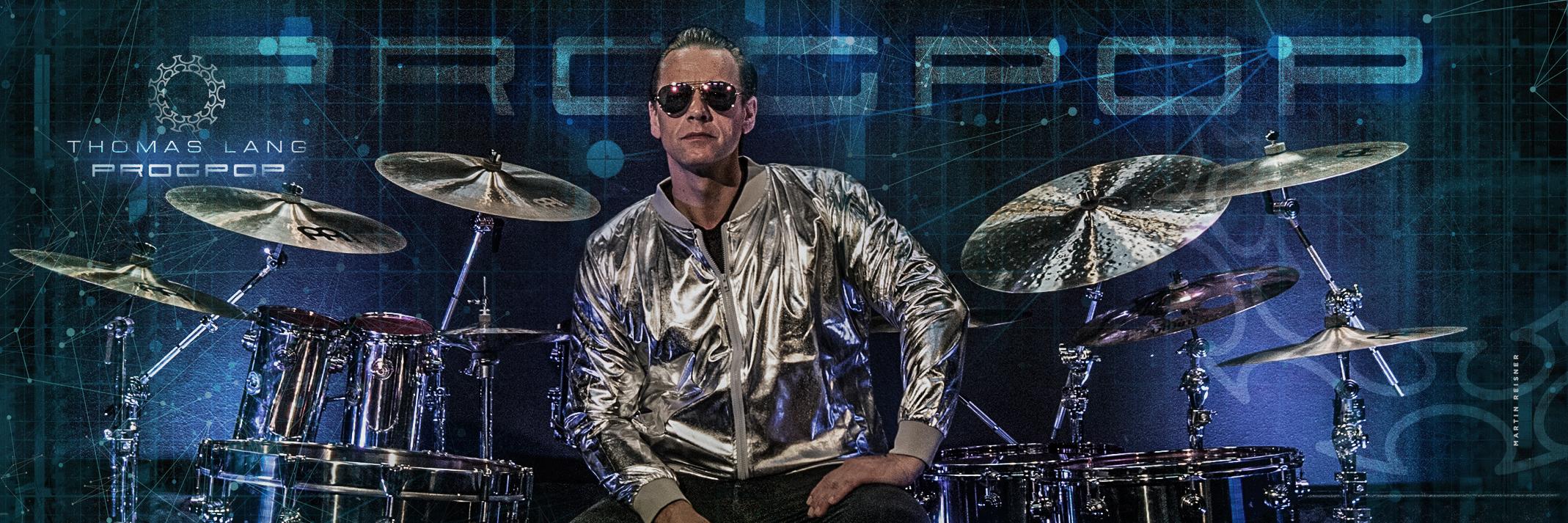
Demasiado orientado a ser música para músicos.
Exacto. Personalmente quería hacer un álbum que tuviera canciones pegadizas, performances vocales, ganchos fuertes y un paisaje sonoro distintivo en general. Amo la música de los 70 y los 80’ y quise ir con un concepto pop obvio en el disco, pero combinado con cosas complejas y baterías progresivas del siglo XXI. En la música pop de los 80 y la progresiva, de los años 70’ y 80’, siempre encontrás grandes composiciones y letras, ganchos, buenos riffs y poderosas melodías. Extraño eso un montón en el pop y en la música progresiva moderna, extraño las performances humanas. Fijate lo que eran bandas y artistas como Genesis, Yes, Rush, Pink Floyd, Kansas, Styx, The Police, King Crimson, Kate Bush, Deep Purple, The Who, Led Zeppelin, Peter Gabriel, Nick Kershaw, Talking Heads y muchos otros.
En esa época encontrabas interesantes combinaciones de instrumentos reales tocados en vivo junto a componentes electrónicos y secuencias. Quería lograr ese carácter general. No quería computadoras ni cajas de ritmos ni partes de percusión electrónicas. Quería que la música tuviera esos elementos, pero debía ser capaz de tocarlos en vivo. Deseaba una batería acústica 100% real y partes de percusión, sin programación, con guitarras y bajos reales, algunos teclados y secuencias, sonido de los 80; voces en vivo reales y sin editar y coros.
¿Y en cuanto a lo baterístico?
Quería interpretar partes que hicieran de sostén de las canciones y que fueran bastante "accesibles" a primera vista. Al mismo tiempo, deseaba que las partes del tambor revelaran una profundidad compleja, repleta de patrones de pies avanzados y una compleja independencia aplicada de los cuatro miembros. Intenté que cada interpretación de batería tuviera muchas capas de ritmos y partes de percusión entrelazadas: la idea fue que sonaran melódicas y simples, pero que sean difíciles de tocar y de ser bien tocadas. Mi idea fue que cada canción tuviera un ritmo que sea reconocible al instante y que esos ritmos fueran composiciones dentro de la composición. La intención fue que el oyente escuchara un compás de una intro baterística y que pudiera reconocer exactamente de qué canción se trata, sin haber escuchado algo de la música.
Repasemos los músicos que participaron de la grabación.
En el bajo estuvieron Ed Poole (Bonnie Tyler, Sam Brown), Kevin Chown (Paul Gilbert/Bombastic Meatbats/Tarja/Sebastian Bach) y Wojtek Pilichowski (artista solista oriundo de Polonia). Como guitarristas, conté con la participación de Leah Woodward (The Aliases/Raven), Marc Bonilla (Keith Emerson/Montrose/CTA), Jeremy Barnes (artista solista), Milan Polak (solista/Racer X) y Tobias Mertens (Lord Of The Lost). A cargo de las voces estuvieron Ginny Luke (solista), Marc Bonilla, Freddy Nelson (solista/Paul Gilbert) y Francesco DiCosmo (Thin Lizzy/Evanescence). Yo me hice cargo de los teclados, de toda la programación, toqué la batería, el bajo y guitarras en algunas canciones, canté en otras y realicé los coros en todas ellas.
Contame acerca de tu kit DW.
Utilicé un set DW Collector’s Series con un bombo de 24x14, un rack tom de 10x8, un snom de 14x14, 4 rototoms, un gong drum y diferentes redoblantes. Grabé todo con el mismo set, salvo un tema llamado “Home”, que fue realizado solo con dos rototoms y un bombo de 20’. Usé platillos Meinl y varios instrumentos accionados por pedal, como un Meinl Crasher, un tambor de pie personalizado DW y dos soportes de hi hat con hi hats y campanas en ellos. Podés ver videos de las configuraciones exactas en YouTube. Cambiaba tambores de vez en cuando, pero para la mayoría de las canciones usé un tambor de la serie Titanium Collector de 14 x 6.5 y lo afiné de manera diferente de una canción a otra.
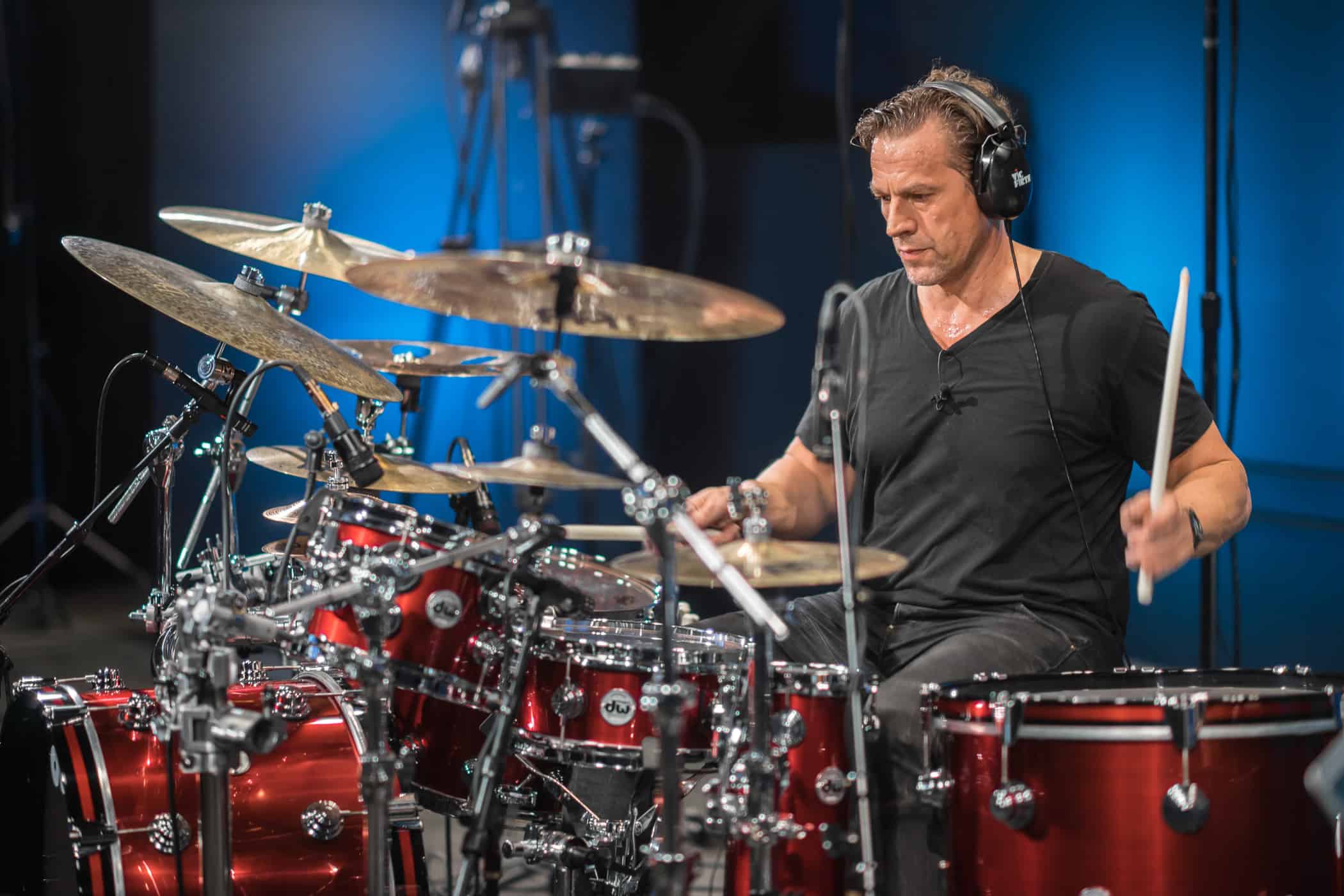
¿Pensás realizar un tour con este álbum?
Planeo llevar el álbum a la carretera a fines de 2020. Mezclaré las canciones de ProgPop con algunos de mis materiales anteriores. Voy a ensayar con mi banda en la primavera y comenzaré a hacer conciertos locales en el verano antes de salir a la ruta en otoño. No estoy pensando realizar tour largos o demasiado trabajo en vivo o gira de clínicas hasta finales del año. Sinceramente estoy extremadamente ocupado con sesiones de grabación aquí en Los Angeles. Además planeo grabar un nuevo disco.
Hablemos sobre tu propio estudio en el cual grabás para artistas de diferentes puntos del planeta.
Tengo dos estudios acá en Los Angeles. Uno está en mi casa y el otro está a unos 5 minutos en auto de mi hogar. Realizo sesiones para artistas de todo el mundo en mis dos estudios y también grabo baterías para comerciales, televisión, bandas sonoras de películas, videojuegos, etcétera. También escribo y produzco mi música aquí y álbumes de otros artistas. Además filmo y grabo todas las lecciones en video y tutoriales para mi escuela de batería online, www.thomaslangsdrumuniverse.com .
¿Cuáles son los pros y los contras de trabajar a distancia?
La desventaja de hacer todo vos mismo (preparación, ingeniería, grabación, mezcla, mastering, transferencia de archivos, etcétera) es que no es tan social e interactivo como trabajar con otras personas en esas capacidades. También requiere un compromiso serio para aprender y educarse a sí mismo. Demanda mucho tiempo, enfoque y trabajo duro.
El beneficio de trabajar en tu propio estudio y hacer todo por tu cuenta es abundante y, en mi opinión, supera las desventajas: aprendés a hacer todo. Crecés como músico todos los días. Generás nuevas habilidades, desde grabación e ingeniería hasta mezcla y mastering. Grabar de esta manera es mucho más barato y puedo realizar más trabajo en menos tiempo. De esta manera chequeo los presupuestos de las personas, no tengo que viajar a otro estudio, configurar, desmontar y conducir o tomarme un vuelo a casa. Usás el tiempo de manera eficiente y es todo más económico. Tengo una gran selección de tambores y platillos para elegir. Tengo varios sets de batería siempre configurados y armados para cambios rápidos destinados a diferentes estilos de música. Es muy eficiente y conveniente para mí, lo que lo hace más barato para mis clientes.
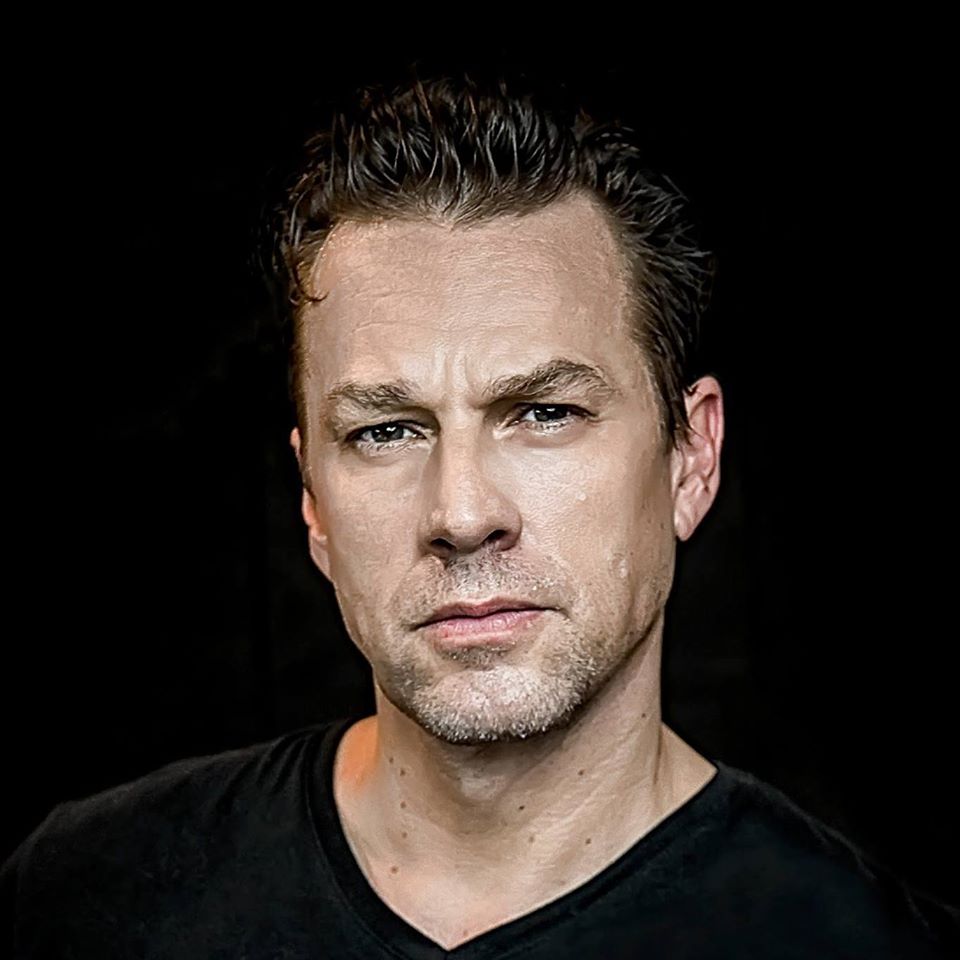
¿Cómo te manejás con las grabaciones a distancia? ¿Tenés una tarifa establecida o la misma se basa en la dificultad que tenga el material?
La tarifa la establezco en base a la dificultad de lo que tenga que grabar. Tengo tarifas fijas por track para música mainstream y precios fijos por minuto de material grabado si es música compleja que requiere mucha preparación y aprendizaje. Me gusta grabar tomas completas en vivo para todos los clientes porque también filmo cada sesión para mi archivo y prefiero pasar más tiempo tocando y aprendiendo la música en lugar de estar editando y "arreglando" cosas después de la grabación. Me gusta conocer realmente la música y tocarla como una sola performance completa, si es posible. Esto crea una energía muy diferente en la pista y eso es lo que trato de capturar. Ya casi nadie trabaja de esta manera y me encanta ese proceso de aprender una canción, tocarla muchas veces antes de presionar el botón de grabación y luego interpretarla con la intención, la actitud y el ambiente correctos. Debido a eso, las tarifas planas para los materiales complejos son más altas. Necesito invertir más tiempo y esfuerzo en aprender la música y es por eso que dicho material requiere una tarifa ligeramente más alta.
¿Podrías profundizar en cómo es el proceso de grabación remota? ¿Qué tipo de pedidos solés recibir?
Recibo solicitudes de artistas de todos los orígenes, estilos, géneros y de todo el mundo. Generalmente hay un alto porcentaje de música muy compleja: metal progresivo, heavy metal, hard rock, jazz rock, pop rock y math metal. Simplemente porque la gente me conoce por mi trabajo en ese campo. También obtengo mucho trabajo de jazz fusión y alrededor del 25% de la carga de trabajo es pop y r&b. Tal vez el 5% de las grabaciones que hago son cosas experimentales, atmosféricas y de estilo vanguardista. Es una variedad muy diversa de estilos y nunca se vuelve aburrida.
El proceso es siempre el mismo. Un cliente se acerca a mí sobre una sesión, escucho su música y decido si me gusta la música y si quiero ser parte de la grabación. Si disfruto de ella, entonces acordamos una tarifa, el cliente me envía las ideas madre y los charts, si los hay. Luego preparo mis sesiones, importo esas “raíces” y empiezo a aprender la música. En aproximadamente el 80% de todas las sesiones tengo que hacer un chart aproximado o incluso transcribir la música en detalle. Toco cada canción hasta que me siento cómodo con ella, luego experimento e interpreto diferentes versiones de la misma. Luego tal vez pruebo diferentes tambores, platillos o posiciones de micrófono. Una vez que todo se siente bien, grabo quizás 5 tomas y luego escucho y selecciono la mejor. Después de una buena toma, generalmente grito "¡buena toma!" en mis Overheads, para que no tenga que escuchar todo, excepto las tomas que me parecieron buenas durante la grabación. Aprendí que mi criterio tras haber interpretado una buena toma siempre es acertado.
Tu estilo es sumamente demandante e incluye un elevado nivel técnico. ¿De qué manera incide tu entrenamiento físico a la hora de tocar? ¿Qué clase de entrenamiento llevás a cabo para estar en forma?
Intento mantenerme razonablemente en forma para no lucir como alguien vago y descuidado a mi edad. Realmente no hago nada específico para mi resistencia como baterista cuando hago ejercicio. Simplemente ejercito como todos los demás. Hago una combinación 50/50 de entrenamiento con pesas y cardio y me enfoco en realizar ejercicios de cuerpo completo como circuitos de entrenamiento o cosas de crossfit. Me gusta subir pendientes extremadamente empinadas a gran velocidad, a menudo con chalecos pesados. También muchos ejercicios de peso corporal, sentadillas, flexiones, burpees, estocadas, saltos, etcétera. Hago algún tipo de ejercicio físico diariamente. Lo mezclo para que un día haga cardio, al siguiente, pesas, luego otro tipo de cardio… De esta manera no me aburro y generalmente lo hago temprano en la mañana y tengo tiempo para concentrarme en mi jornada. Tal vez escucho música que grabaré más tarde o simplemente planee mentalmente mi día en detalle. Hacer ejercicio no es sólo una actividad física para mí. Tiene un fuerte componente mental y eso es probablemente lo que más me ayuda a tocar la batería, mucho más que el entrenamiento físico.
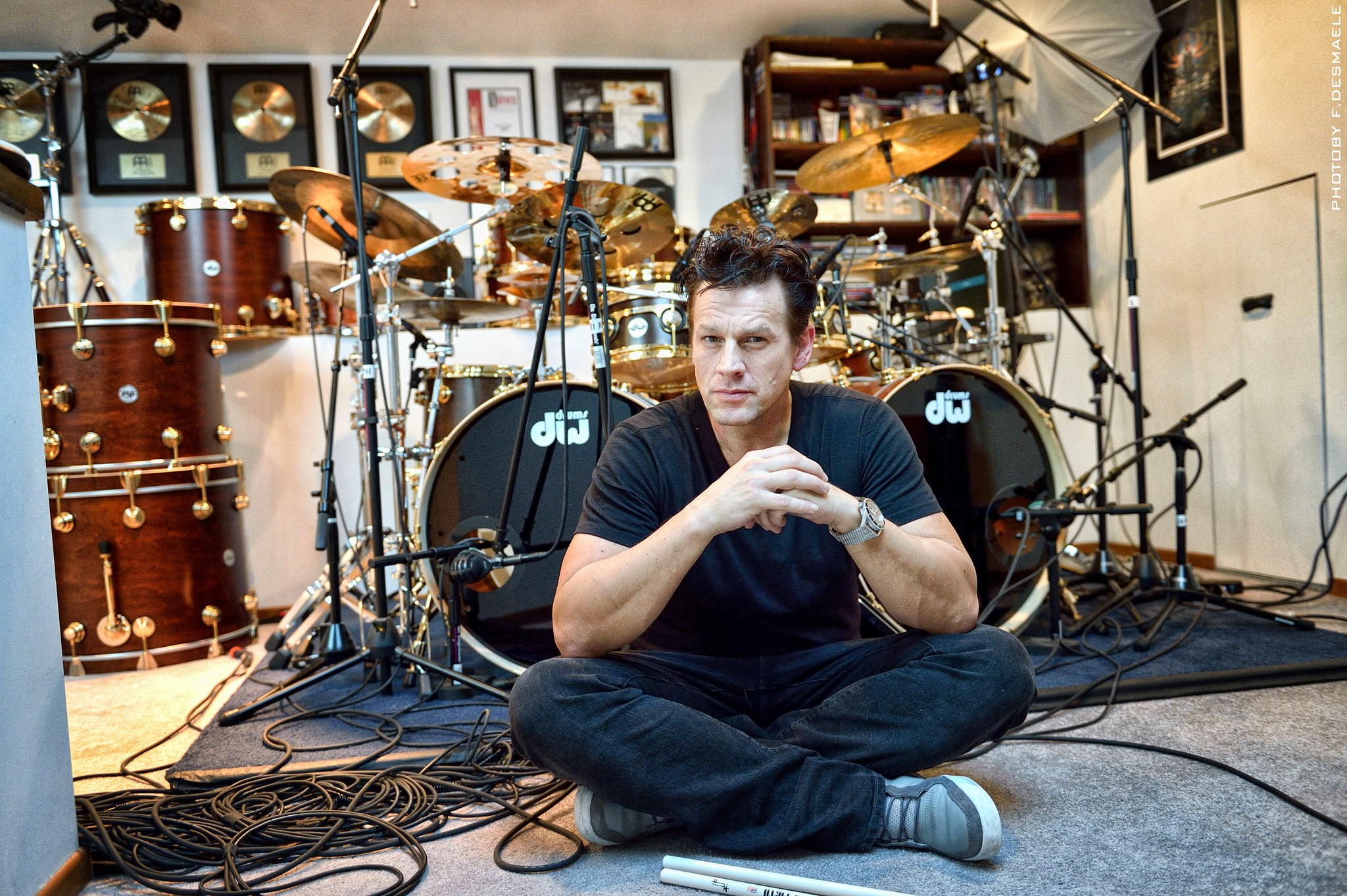
¿Podrías brindar algunos consejos relacionados con formas efectivas de abordar la práctica baterística? Siempre mencionás la importancia de la calidad por sobre la cantidad.
Me concentro en los objetivos y en los resultados de mi práctica. Me pongo metas y las persigo muy metódicamente, con un alto nivel de disciplina y enfoque. La práctica debe ser constante, diaria y tiene que ser de calidad. La práctica de calidad es una experiencia repetitiva, enfocada, intensa y de gran energía. Siempre debe tener un alto nivel de intensidad con un enfoque constante en la mejora. Creo que la forma más efectiva de practicar es hacerlo de manera metódica, organizada, disciplinada y regular. Definí tus objetivos, luego hacé un plan, cumplilo y trabajá todos los días para experimentar una mejoría constante. Focalizate en no más de tres "capítulos" o "conceptos" en un momento dado. Mantené un registro de práctica. Aprendé las reglas de la práctica eficiente. Creá el mejor entorno de práctica posible. Siempre mantenete inspirado y motivado exponiéndote a influencias inspiradoras. Trabajá cada día más cerca de tu objetivo.
Con respecto a tu escuela de batería online, Thomas Lang Drum Universe, quiero preguntarte si ofrecés material adaptado a cada alumno o, en cambio, un programa general.
Mi escuela ofrece una gran cantidad de ejercicios para que mis alumnos los vean a su discreción. Ellos pueden contactarme e interactuar conmigo a través de los mensajes y el foro. A menudo me envían videos de ellos mismos y me hacen preguntas técnicas, musicales o comerciales específicas. Suelen preguntarme dónde encontrar ejercicios específicos en la gran selección de material y los señalo en la dirección correcta. No subo material para alumnos individuales, pero sí genero ejercicios inspirados en los intereses y preguntas de mis estudiantes. Actualizo el sitio web con material nuevo siempre que sea posible. Un desarrollo completamente nuevo es el siguiente: si te registrás en mi escuela en línea, obtenés un año de suscripción gratuita a Drum Channel y viceversa. ¡Básicamente tenés 2 escuelas en línea por el precio de una!
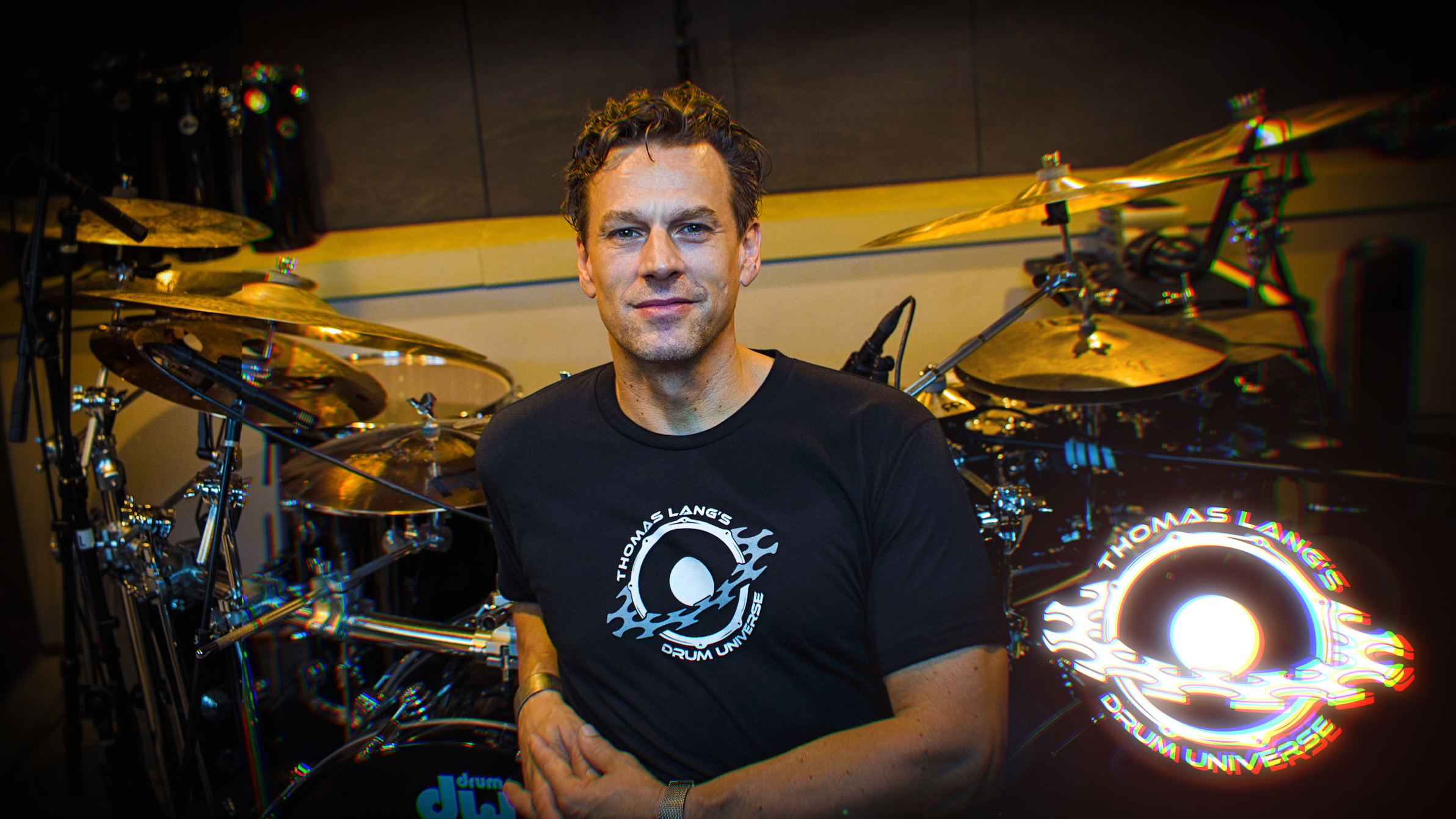
Hace varios años atrás revelaste tu sistema de coordinación e interdependencia de miembros que mostró un nuevo approach a la hora de concebir un rápido progreso en el instrumento. ¿Cómo desarrollaste esa matrix? ¿Cuáles fueron tus influencias? Se percibe un rastro de influencia de Gary Chaffee en términos de stickings y algo del libro "4 Way Coordination"
Cuando era niño pasé muchos años trabajando en diferentes métodos de coordinación e independencia con mis maestros, incluyendo el 4-Way Coordination y los libros de Gary Chaffee, los dos libros de Jim Chapin, The New Breed, los materiales de Dante Agostini y otros. Me di cuenta que esas publicaciones tenían algo en común: eran demasiado largas, complejas, intimidantes y extensas de cientos de ejercicios individuales. Todos esos libros eran bastante "secos" y extremadamente matemáticos, pero nada creativos. Ninguno de ellos tenía un componente de orquestación ni permitían la interpretación.
Experimenté con todos esos libros y agilicé las ideas hasta su esencia y luego comencé a crear ejercicios basados en esa esencia, que es una fórmula. Luego agregué todos los elementos básicos de la música que podemos aplicar a la batería, todos excepto la melodía y la armonía: dinámica, orquestación, reflexión, variación, modulación y transposición. Esto permitió aplicaciones de práctica creativa de esa fórmula, lo cual inspira un pensamiento y una intención musical mientras ejercitás algo tan complejo como la independencia y coordinación no lineal. Luego amplié el alcance de los ejercicios y organicé el método en forma de matrix. Quería poder ajustar la fórmula y todo el concepto de la matrix en una sola hoja de papel. Con esa fórmula podés ser creativo e inventar tus propios ejercicios personalizados. ¡Millones y millones de opciones creativas y, con suerte, inspiración musical!
El año pasado giraste con Virgil Donati. ¿Qué podés decir de él y de esa experiencia en particular?
Virgil es un querido amigo de hace más de 25 años y disfruté muchísimo todo el proceso. Hicimos tres giras con este proyecto a dos baterías. Una se llamó "The Sphere" y la llevamos a cabo en Asia y Australia; la otra, "The DW TV Show", también en Asia y en los Estados Unidos. El tercer tour se denominó "Donati / Lang" y fue realizado durante algunas semanas en Europa.
Virgil es un tremendo músico dedicado. Es increíblemente disciplinado, siempre da el 100%, se esfuerza continuamente por crecer, aprender y mejorar; siempre trabaja en el desarrollo de nuevas ideas y vive una vida dedicada a la música y la batería. Todas esas cualidades lo convierten en alguien con quien puedo identificarme totalmente y una gran inspiración. Me encanta intercambiar ideas con él, compartir información e inspiración, y tengo el privilegio de que sea mi amigo. Nos divertimos mucho en esas giras y estoy seguro de que haremos más cuando ambos podamos encontrar tiempo nuevamente.
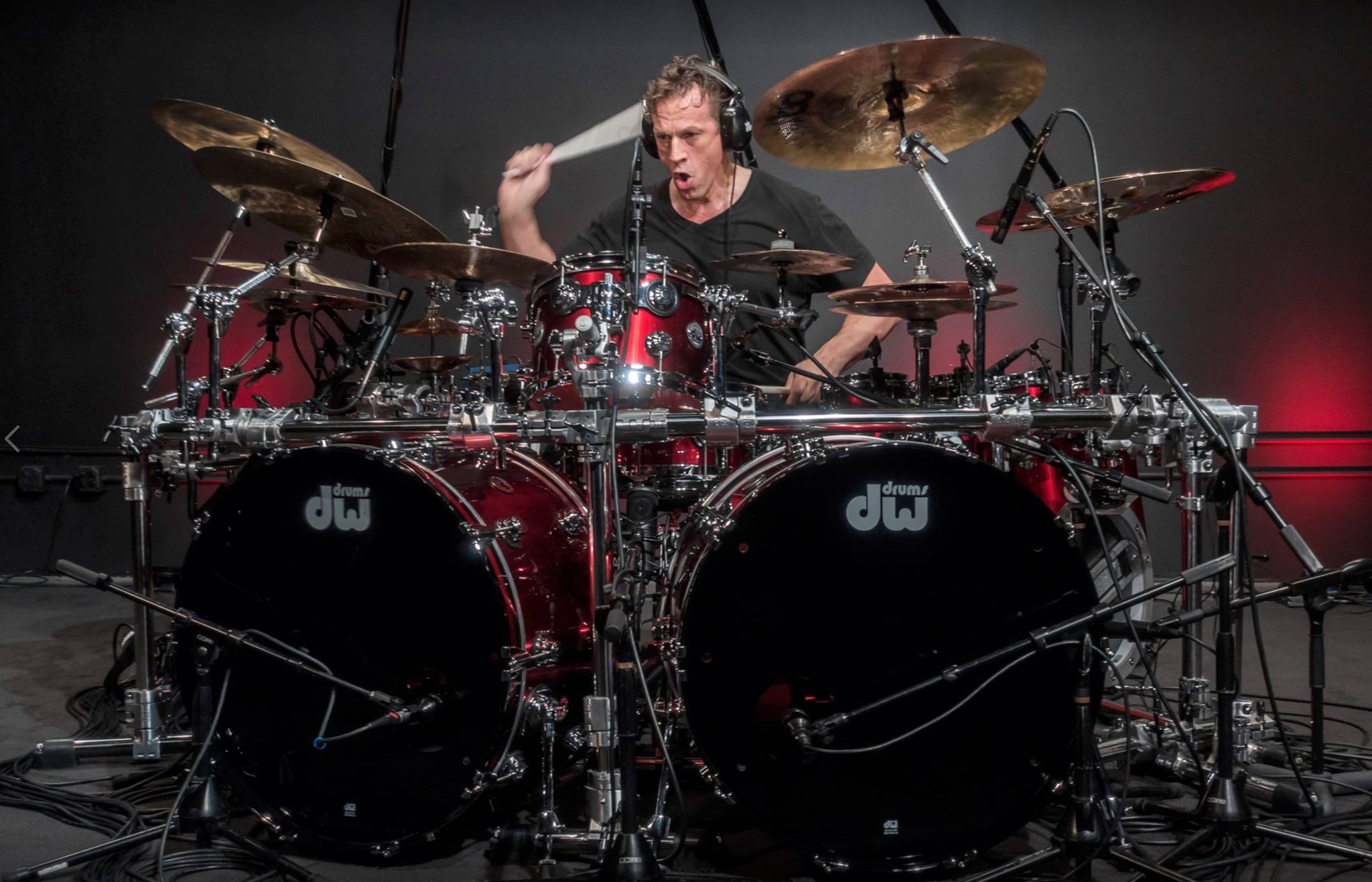
Credit: Antonello Broi
¿Qué cosas te mantienen inspirado a esta altura de tu carrera?
Siempre estoy naturalmente inspirado. No necesito hacer algo para sentirme así. Nunca fui "no inspirado" y no me excitó la música y la batería. Amo la música, componer, tocar, arreglar, producir. Amo a las personas que conozco a través de la música. Me encantan las cosas que puedo ver y experimentar debido a ella: el estilo de vida, los desafíos, la pasión, la inspiración y, sobre todo, la creatividad que esta vida exige y requiere. Me encantan las respuestas de las audiencias, la alegría que como músicos podemos aportar a la vida de las personas; los pensamientos que podemos provocar a través de la música; la estética de tocar un instrumento, el control físico y el dominio sobre un instrumento. Todas estas cosas me mantienen inspirado. Me encanta la piel de gallina que se me pone cuando escucho una gran parte de la música. La música y la batería son algo extremadamente poderoso y esa energía y poder me mantienen inspirado.
ENG VERSION:
Thomas Lang: The emperor
With astonishing drum skills, ultra complex ostinatos, non-human technique, a giant amount of discipline, creativeness and charisma, Thomas Lang emerged from his native land, Austria, and made a revolution in the drum world scene between the 90`s and the 2000´s Lang and colleagues such as Virgil Donati and Marco Minnemann rose the drum level to unsuspected limits.
Lang is considered to be one of the world's greatest drummers. His technical approach, stamina, ability, interdependence, coordination and musicality are signs not only of great skills: they reveal years and years of methodical drum study. Perfect practice makes you perfect.
World-renown drummer, producer, artist and educator Thomas Lang’s plays the unplayed in his solo releases. But he is not only a high-technical player; he adapts to what the musical situation requires. That versatility led him to work with artists very dissimilar such as: Paul Gilbert (Racer X/Mr. Big), John Wetton (Asia/King Crimson), Robert Fripp, Tina Turner, Peter Gabriel, Glenn Hughes (Deep Purple), UK, Eddie Jobson, Robbie Williams, Kelly Clarkson, Sugababes, Geri Halliwell, Emma Burton (“Baby Spice”),Victoria Beckham (“Posh Spice”), Ronan Keating, Steve Hackett (Genesis), Boyzone, 911, Falco, Nina Hagen, Steve Jones, Mick Jones (The Clash), The Commodores, George Michael, Doogie White (Rainbow), Bill Liesegang, The Blockheads, Gianna Nannini, Sertab Erener, Jens Lindemann, Vienna Art Orchestra, Bonnie Tyler, Save The Robots, Stork, Terabite, Schwarzenator, Vinnie Valentino, Gregg Howe, Page Hamilton (Helmet), Mark Bonilla (Montrose) and many more.
REC Or Play had the chance to talk with the Austrian drummer some days before NAMM, one of the two largest music product trade shows in the world. In an extensive talk, Thomas told us about Progpop, his brand new album which was recorded in his home studio and includes special guests such as Ginny Luke, Marc Bonilla, Freddy Nelson (solista/Paul Gilbert) y Francesco DiCosmo (Thin Lizzy/Evanescence), Kevin Chown (Paul Gilbert/Bombastic Meatbats/Tarja/Sebastian Bach) y Wojtek Pilichowski, Leah Woodward (The Aliases/Raven) among others.
We also discused with Thomas the pros and cons of remote recording (he has two studios where he makes recordings for artists from all over the world), his psychical training, hys system of coordination and interdependence of members, which showed a whole new approach when conceiving fast progress in the instrument and many more. A very inspirational chat with a great drummer and human being. Thomas Lang, the emperor. Let´s take a deep look into his world.
Let´s talk about Prog Pop, your brand new album. Did you recorded it in your own studio?
Yes, I produced and recorded ProgPop in my studio. I recorded all the drums in full, live takes. No punching-in, no copy/paste, no quantization or any other processing. I wanted to capture a real drum performance and not a processed and cut-up, edited recording. I also engineered the whole album. I recorded most of the guest musicians and singers in my studio as well. In some cases I sent song-files to some friends and musicians who I admire all over the world, and had them record their parts in their own home studios, simply because it saved time and made it possible to collaborate with them.
I had Jeremy Barnes record in Australia, Milan Polak in Italy, Leah Woodward and Ed Poole in the UK, Tobias Mertens in Germany and Freddie Nelson in Philadelphia. That way it was possible to get everybody to record all of my guests in a very short period of time because they were working on different songs pretty much all at the same time. I recorded all my guests on 14 songs in roughly 4 weeks, which is very quick considering the amount of songs and complexity of some of the material.
¿Which was the idea and the general concept behind the recording?
The idea behind the album was to make a “drummer album” that is different from the usual “drummer albums”. Most solo albums by drummers are instrumental and musically mostly in the genre of “Fusion” or “Jazz/Fusion/Metal Crossover”. I hardly know any solo album by any drummer that is NOT that style, and I find it boring.
Music only for musicians…
Yes… I wanted to make an album that has catchy songs, vocal performances and strong hooks, and a different “soundscape” in general. I love music from the 70’s and 80’s and I decided to go with a very obvious 80’s Pop theme on the album, combined with complex and progressive drumming from the 21st century.
In 80’s Pop Music and in 70’s and 80’s Progressive Music you always found really great compositions, great songwriting and catchy hooks and riffs as well as strong melodies. I miss that on a lot of Progressive Music today and also in a lot of Pop Music I miss the human performances. Just think back to bands and artists like Genesis, Yes, Rush, Pink Floyd, Kansas, Styx, The Police, King Crimson, Kate Bush, Deep Purple, The Who, Led Zeppelin, Peter Gabriel, Nick Kershaw, Talking Heads, and many more… In that era of music you also found interesting combinations of real/live instruments and human performances, with electronic components and sequencing. I wanted to achieve that general character. I wanted no computers or drum machines and no electronic percussion parts. I wanted the music to have those elements but it HAD to be played live. I wanted 100% real, acoustic drums and percussion parts, no programming at all, real guitars and basses, some sequencing and 80’s sounding keyboards and real, unedited live vocals and backing vocals.
And in terms of drumming?
In terms of the drumming, I wanted to play parts that support the songs and seem quite “approachable” at first glance. At the same time I wanted the drum parts to reveal a complex depth, packed with advanced foot patterns and complex applied 4-way independence. I wanted every drum performance to have many layers of rhythms and percussion parts woven into them. I wanted parts that sound melodic and simple, but are challenging to play and perform well. I also wanted each song to have a drum beat that is instantly recognizable. I wanted to create drum grooves that are “compositions within the composition”. I want the listener to hear one bar of a drum intro and know exactly which song it is without hearing any of the music.
Please bring us some details about the musicians involved in the recording
I have quite few guest musicians on the album: On bass I have Ed Poole (Bonnie Tyler, Sam Brown) , Kevin Chown (Paul Gilbert/Bombastic Meatbats/Tarja/Sebastian Bach), Wojtek Pilichowski (Solo artist from Poland), on guitar I had Leah Woodward (The Aliases/Raven), Marc Bonilla (Keith Emerson/Montrose/CTA), Jeremy Barnes (Solo Artist), Milan Polak (Solo Artist/Racer X), and Tobias Mertens (Lord Of The Lost). On vocals Ginny Luke (Solo Artist), Marc Bonilla, Freddy Nelson (Solo Artist/Paul Gilbert) and Francesco DiCosmo (Thin Lizzy/Evanescence). I played all the keyboards, did all the programming and played drums, bass and guitars on a few songs, sang lead on some songs and did backing vocals on all of them.
Which was your drum setup in this recording?
I used a DW Collector’s series kit with a 24x14” kick drum, a 10x8 rack tom, 14 x14 snom, 4 roto toms, a gong drum and different snare drums. I recorded everything on the same setup, except for a song called “Home”, which was recorded with only 2 roto toms and a 20” kick drum. I used all Meinl cymbals and various pedal-operated instruments like a Meinl Crasher, a DW custom foot-snare drum and two HiHat stands with HiHats and Bells on them. You can see videos of the exact setups on Youtube. I switched out snare drums occasionally but for most of the songs I used a 14 x 6.5 Titanium Collector’s Series drum and tuned it differently from song to song.
Are you going to tour with this CD in 2020?
I plan to take the album on the road in late 2020. I’ll mix the songs from ProgPop with some of my earlier material. I am going to rehearse with my band in the spring and start doing local gigs in the summer before taking it on the road in the fall. I am not planning any long tours, or much live-work/clinic tours until late 2020. I am extremely busy with recording sessions here in Los Angeles and I´m also planning to record a new album.
You have your own studio in which you make recordings for artists around the world.
I have two of my own studios here in Los Angeles. One is in my house and the other is about 5 minutes drive from my house. I record “remote drum sessions” for artists from all over the world in both of my studios and I record drums for commercials, television, movie soundtracks, computer games, etcetera, here as well. I also write and produce all my own music here and I write and produce other artist’s albums here too. I film and record all the video lessons and tutorials for my online drum school in my studios as well. (www.thomaslangsdrumuniverse.com).
Which are the pros and cons of this way of working?
Of course there are pro’s and con’s in working this way. The downside of doing everything yourself- prepping, engineering, recording, mixing, mastering, transferring the files etc- is that it is not as social and as interactive as working with other people in those capacities. It also requires a serious commitment to learning and educating yourself. It is very time-consuming and requires a lot of focus, labour, etcetera. The benefit of working in your own studio and doing everything yourself are plentiful and in my opinion outweigh the downsides: you learn to do everything. You grow as a musician every single day. You learn new skills, from recording and engineering to mixing and mastering. It is much cheaper to record this way and I can do more work in a shorter amount of time. I can work with people’s budgets, I don’t have to travel to another studio, set up, tear down and drive or fly home. It is more time efficient and more economic. I have a huge selection of drums and cymbals to choose from. I have several drum sets always set up and dialled in for quick changes, for different styles of music. It’s very efficient and convenient for me, which makes it cheaper for my clients.
How do you handle remote recordings? Have you got an established rate or it’s based on the difficulty of the material?
It is based on the difficulty of the material. I have flat rates per track for mainstream music and I have flat rates per minute of recorded material if it is complex music and requires a lot of prepping and learning. I like to record full live takes for all my clients because I film every session as well for my archive and I prefer spending more time playing and learning the music rather than spending the time editing and “fixing” things after recording. I like to really know the music and play it as one single and full performance if possible. This creates a very different energy on the track and that is what I am trying to capture. Hardly anybody works this way anymore and I love that process of learning a song, playing it many times before I hold the record button and then playing it with the right intention, the right attitude and vibe. Because of that the flat rates for more complex material is higher. I need to invest more time and effort in learning the music and that is why complex material requires a slightly higher fee.
Can you delve into how the process of remote recording is? Which kind of requests do you usually receive?
I receive requests from artists of all backgrounds, all styles and genres and from all over the world. I get a high percentage of very complex music, Progressive Metal, Heavy Metal, Hard Rock, Jazz-Rock, Pop Rock and Math-Metal, simply because people know me for my work in that field. I also get a lot of Jazz/Fusion work and about 25% of the workload is Pop and R&B. Maybe 5% of the recordings I do are experimental, atmospheric, avantgarde-style stuff. It is a diverse variety of styles and it never gets boring.
The process is always the same. A client approaches me about a session, I listen to their music and decide if I like the music and want to be part of it. If I do enjoy the music then we agree on a fee, the client sends me the stems and charts if there are any. I then prepare my sessions, import the stems and start learning the music. In about 80% of all sessions I have to make a rough chart or even transcribe the music in detail. I play each song until I feel comfortable with it, I then experiment and play different versions of it, maybe I will try different snares or cymbals or microphone positions, etc. Once it all feels right I record maybe 5 takes and then listen back and select the best one. After a good take I usually shout “good take” into my overheads after the track so I don’t have to listen to everything except for the takes that felt good to me during the recording. I have learned that my judgement right after playing a good take is always spot-on.
Your drum style is so physical and has a lot of technique. How does your physical training affect you when playing? What types of training do you do to be fit?
I just try to stay reasonably fit so I don’t look like a fat slob at my age! It’s mostly vanity and a little bit of a healthy attitude. I really don’t do anything specific for my drumming stamina when I work out. I just exercise like everybody else. I do a 50/50 mix of weight training and cardio and I like doing full-body workouts like circuit training or crossfit exercises. I like to walk up extremely steep inclines at a fast speed, often with weighted vests, I do a lot of body-weight exercises, squats, press-ups, burpees, air squats, lunges, jumps and so on. I do some kind of physical workout every day. I mix it up so one day I’ll do cardio, the next day weights, then another type of cardio, etcetera. This way I don’t get bored and I usually do it early in the morning and have time to focus on my day, maybe listen to music I will be recording later, or just mentally plan out my day on detail. Exercising is more than just a physical activity for me. It has a strong mental component and that is probably what helps my drumming the most, much more than the physical workout.
Could you give an advice related to effective ways of drum practice? You always mention the importance of quality and not quantity!
I focus on goals and on the results of my practice. I set goals and I pursue them very methodically and with a high level of discipline and focus. Practice should be consistent, daily, and it should be quality practice. Quality practice is a methodical, repetitive, focused, intense and high-energy experience. Practice should always be at a high level of intensity with constant focus on improvement. I find the most effective way of practicing is methodical, organized, disciplined and regular. Define your goals, then make a plan, stick to the plan and work hard every day to experience constant improvement. Work on no more than three “chapters” or “concepts” at any given time. Keep a practice log. Learn the rules of efficient practice. Create the best possible practice environment for yourself. Always stay inspired and motivated by exposing yourself to inspiring influences and work every single day on inching closer to your goal.
Let’s talk about your drumming school online, Thomas Lang Drum Universe. Do you offer material adapted to each student or is it something rather general?
My school is offering a vast amount of exercises for my students to watch at their discretion. My students and subscribers can contact me and interact with me via the messages and forum. They often send me videos of themselves and ask specific technical or musical/business questions. Often they ask where to find specific exercises in the large selection of material and I point them in the right direction. I don’t create material for individual students but I do create exercises that are inspired by my student’s interests and questions. I update the website with new material whenever possible. A brand new development is this: If you sign up for my online school, you get one year of Drum Channel subscription for free and vice versa! You basically get 2 online schools for the price of one!
Many years ago you revealed your system of coordination and interdependence of members, which showed a whole new approach when conceiving fast progress in the instrument. How did you develop that matrix? Which were the influences? It seems that you had and influence of Gary Chafee in terms of stickings and the book 4 Way Coordination.
I spent several years as a kid working through many different coordination and independence method books with my teachers, including 4-Way Coordination and Gary Chafee’s books, The New Breed, both of Jim Chapin’s books, Dante Agostini’s books and others. I noticed that all these books had some things in common: they were all really long, complex intimidating and extensive collections of hundreds of individual exercises. They were all quite dry and extremely mathematical but not at all creative. None of them had an orchestration component and none of them allowed for interpretation. When you learned one complex non-linear layer of patterns and you wanted to change one single note, you basically had to start from scratch again, re-learning everything with that one different note. I found that very inefficient. All the books showed us the calculations and the results, but none of them showed us the FORMULA.
I experimented with all of these books and biled the ideas down to their essence and then started creating exercises that are based on that essence, which is a formula. I then added all the basic elements of music that we can apply on the drums -all except melody and harmony: Dynamics, orchestration, reflexion, variation, modulation, transposition, etcetera. This allowed for creative practice applications of that formula, which inspires a musical thought and intent while practicing as dry and complex as non-linear independence and coordination. I then expanded the scope of the exercises and organized the method in a matrix-like fashion. I wanted to be able to fit the FORMULA and the whole concept of the matrix on a single piece of paper. With that formula you can get creative and invent your own, customized and personalized exercises. Millions and millions of creative options and hopefully musical inspiration!
Last year you toured with Virgil Donati. What could you say about Virgil and that experience?
Virgil is a dear friend of 25 years and I enjoyed the whole process immensely. We did three tours with this double-drum project. One was called “The Sphere” -all around Asia and Australia-and another one was called “The DW TV Show” also in Asia and in the US, the third one was called “ Donati/Lang” and we did it for a few weeks around Europe.
Virgil is an incredible dedicated musician. He is incredibly disciplined, always gives 100%, always strives to grow, learn and improve, always works on developing new ideas and lives a life dedicated to music and drumming. All those qualities make him someone I can totally identify with and a huge inspiration. I love trading ideas with him, sharing information and inspiration, and I am privileged to call him friend. We had a blast on those tours and I am sure we will do more when we both can find the time again.
Which things keep you inspired after so many years of career?
I am always naturally inspired. I don’t need to do anything to stay inspired. I was never “not inspired” and not turned on by music and drumming. I love music, I love composing, playing, arranging, producing music. I love the people I meet through music. I love the things I get to see and experience because of music. I love the lifestyle, the challenges, the passion, the inspiration and most of all the creativity this life demands and requires. I love the responses from audiences, I love the joy we as musicians can bring to people’s lives. I love the thoughts we can provoke through music. I love the esthetics of playing an instrument, the physical control and command over an instrument. All these things keep me inspired. I love getting goosebumps when I hear a great piece of music. Music and drumming are an extremely powerful thing and that energy and power keeps me inspired.
*Thomas Lang endorses DW drums, Meinl Cymbals, Vic Firth drum sticks, Remo drum heads, Audix microphones, Roland V-drums and electronics, QSC speakers and amps, Klotz cables and accessories, Ahead Armor cases, Queens Guard accessories, Puresound snare wires, Drumtacs mufflers and Tuner Fish lug locks.




